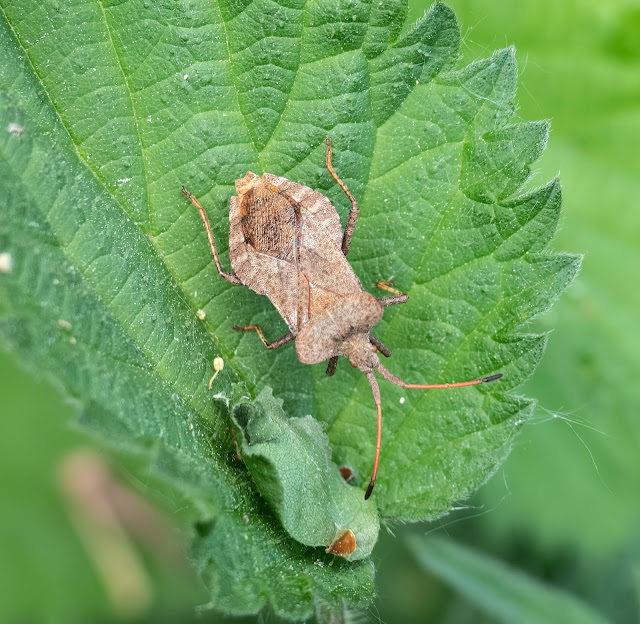A visit to this gem of a reserve today to primarily look for Odonata and Hoverflies, resulted in a superb visit in the mixed weather conditions.
To start, my continued efforts to learn, record and photograph Hoverflies, saw me finding three new species for my personal lifelist, with these also being very rare for the county also.
In order of appearance, the first species encountered was Criorinha flocossa, a very good Bumblebee mimic, looking very like Common-carder Bee and is a species which is associated with breeding in the rotting bases and stumps of old deciduous trees.
Number two was a total surprise, as i was checking some Alders for Chalcosyrphus nemorum, at an area i have seen them at before, i immediately noticed a Brachyopa sp. sat sheltering on one of the trunks. I took as many photos as i could of this distinctive little Hoverfly and after speaking to Roger Morris the author of Hoverflies of Britain and Ireland, he thought it may well be Brachyopa insensilis, but could not be 100% certain due to the location I had found it in and the fact i could not get close enough to photograph the antennal pits, a useful feature for separating the species from its close relatives. I was really chuffed with this find, a really good species for the county.
The third find was another Criorinha species and this time it was Criorinha asilica. This is a very good Honey Bee mimic, but is easily separable by the long antennae associated with this family of Hoverflies. The species is another mature woodland species as are the other members of this family and usually breeds in similar conditions to flocossa.
Other Hoverfly species seen today included Cheilosia illustrata, Cheilosia albitarsus, Syritta pipiens, Leucozona leucorum, Myathropa florea and Rhingia campestris to name but a few.
Quite a nice selection of Hymenoptera were also encountered, with a fantastic species of Ichneumon Wasp seen, Ephialtes manifestator with its super long ovipositor, being at least 7cm in length, looking very impressive!.
Other species included Gooden's Nomad Bee, Tawny-mining Bee and Red Mason Bee.
Other flying insects recorded included several Dark-edged Bee Flies and Empis tessellata.
Shieldbugs are becoming a regular sight now on my visits out and about, with today being no exception, and i managed to find Parent Bug, Bronze Shieldbug and a lovely Dock Bug. This large family of insects are always great to encounter and i always try and take as many photos as possible when given the chance.
Not many Butterflies were seen today, but i did manage to see my first Brown Argus of the year, Green-veined White, Orange Tip and a couple of Speckled Woods.
A new moth species for me was found roosting on an Alder, the Micro Moth Pammene argyrana, it breeds on Oak trees with the caterpillar living in a gall, often that of a hymenopterous insect, an interesting breeding strategy.
I really didn't spend that long looking at birds today to be fair, but i did manage to see and hear a couple of Garden Warblers and enjoyed good views of a Hobby, three Common Terns and three Marsh Harriers.
Well what a really special place this is and with some proper management could be so much better.
 |
| Brown Argus |
 |
| Hoverfly - Criorinha flocossa, Female |
 |
| Hoverfly - Cheilosia albitarsus, Male |
 |
| Dock Bug |
 |
| Empis tessellata |
 |
| Parent Bugs |
 |
| Ichneumon Wasp - Ephialtes manifestator, Female |
 |
| Hoverfly Cheilosia illustrata, Female |
 |
| Hoverfly Chalcosyrphus nemorum, Male |
 |
| Brachyopa sp. |
 |
| Micro Moth Species, Pammene argyrana |
 |
| Dark-edged Bee Fly - Female |
 |
| Hoverfly Syritta pipiens, Male |
 |
| Tawny-mining Bee, Female |
 |
| Red-mason Bee |
 |
| Gooden's-nomad Bee |
 |
| Hoverfly Leucozona leucorum, Female |
 |
| Hoverfly Criorinha asilica, Male |
 |
| Bronze Shieldbug With Prey. |

























No comments:
Post a Comment